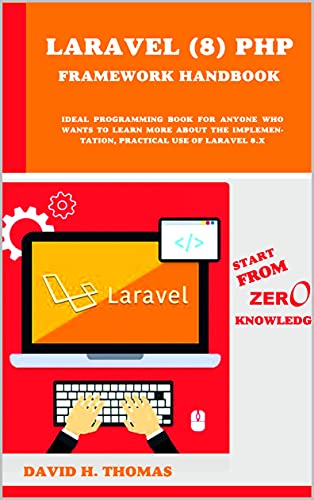Machine Learning: The complete Math Guide to Master Data Science with Python and Developing Artificial Intelligence by Algore, Matt, pdf book , free download
Contents:
PART I
Introduction
What Happens When you Try to Teach a Machine to Do Mathematics?
Logistic Regression
Decision Trees
Naive Bayes
Artificial Neural Networks
Co-Regression Models
Clustering Algorithms
Why Python and Data Science?
Is it Possible to Apply Machine Learning to Aspects of Mathematics?
Can MATLAB in a Computer Do Machine Learning?
Is it Possible to Use MATLAB in a Computer to Do Machine Learning?
How Do You Teach a Computer to Do Machine Learning?
Can You Automate Machine Learning?
Do Computers Ever Make Mistakes?
Who Is to Blame When a Machine Makes a Mistake?
Relation Between Big Data and Machine Learning (ML)
Uses of Machine Learning
Actual Machine Learning Algorithms
Chapter 1. What Is Machine Learning?
1. Research on Statistics
2. An Analysis of Big Data
3. The Financial World
The Benefits of Machine Learning
1. Marketing Products Are More Comfortable
2. Machine Learning Can Help with Accurate Medical Predictions
3. Can Make Data Entry Easier
4. Helps with Spam Detection
5. Can Improve the Financial World
6. Can Make Manufacturing More Efficient
7. It Requires us with a Better Understanding of the Customer
Supervised Machine Learning
Unsupervised Machine Learning
Reinforcement Machine Learning
Chapter 2. Giving the Computers the Ability to Learn From Data
Why Use Python for Machine Learning?
How to Get Started with Python?
Python Syntax
Python Variables
Chapter 3. Basic Terminology and Notations
Mathematical Notation for Machine Learning
Algebra
Calculus
Linear Algebra
Probability
Set Theory
Statistics
Terminologies Used for Machine Learning
1. Natural Language Processing (NLP)
2. Dataset
3. Computer Vision
4. Supervised Learning
5. Unsupervised Learning
6. Reinforcement Learning
7. Neural Networks
Chapter 4. Evaluating Models and Predicting Unseen Data Instances
How Is Python Chosen Over other Tools for Data Science?
Direct Learning
Data Science Vast Libraries
Expandable
Colossal Community for Python
Why Python and Data Science Mix Well?
Data Science Statistical Learning
Inference and Prediction
Parametric and Non-Parametric Functions
Model Interpretability and Prediction Accuracy
Model Accuracy Assessing
Variance and Bias
Variance and Bias Relationship
Relation Between Big Data and Machine Learning (ML)
Chapter 5. Building Good Training Datasets
Import Dataset
Preview the Dataframe
Find Row Item
Shape
Columns
Describe
Pairplots
Heatmaps
Chapter 6. Combining Different Models for Ensemble Learning
Chapter 7. Applying Machine Learning to Sentiments Analysis
1. How Would you Explain NLP to a Layman? Why Is it Difficult to Implement?
2. What Is the Use of NLP in Machine Learning?
3. What Are the Different Steps in Performing Text Classification?
4. What Do you Understand by Keyword Normalization? Why Is it Needed?
5. Tell me about Part-Of-Speech (POS) Tagging.
6. Have you Heard of the Dependency Parsing Algorithm?
7. Explain the Vector Space Model and its Use.
8. What Do you Mean by Term Frequency and Inverse Document Frequency?
9. Explain Cosine Similarity in a Simple Way.
10. Explain the N-Gram Method.
11. How Many 3-Grams Can Be Generated from this Sentence "I Love New York Style Pizza"?
12. Have you Heard of the Bag-Of-Words Model?
Chapter 8. Conditional or Decisional Statements
The If Statement
The If-Else Statement
The Elif Statements
Control Flow
Chapter 9. Functions
Why Are User-Defined Functions so Important?
Options for Function Arguments
Writing a Function
Python Modules
Python Package
Chapter 10. Actual Machine Learning Algorithms
An Overview on Decision Trees
Classification and Regression Trees
The Overfitting Problem
Chapter 11. Applications of the Machine Learning Technology
Virtual Personal Assistants
Predictions While Driving
Video Surveillance
Social Media
Email Spam and Malware Filtering
Online Customer Service
Refinement of Search Engine Results
Product Recommendations
Online Fraud Detection
Predictive Analytics
Prescient Analysis for Customer Behavior
Capability and Prioritization of Leads
Distinguishing Proof of Current Market Trends
Client Segmentation and Targeting
Advancement of Marketing Strategies
Chapter 12. Data Mining and Applications
How Does Data Mining Work?
Unbalanced Data Set
Conclusion
PART II
Introduction
Features of Python Programming
Simple Language
Portability
Standard Libraries
Free Open-Sources
Downloading and Installing Python
Python Development and Application
Python Variables
Naming Variables in Python
Types of Data Variables
Int
Char
Bytes
Strings
Python Debugging
Chapter 1. About Data Analysis
Chapter 2. Why Python for Data Analysis
How Python Can Help With Data Analysis
How Python Fits Into Data Analysis
Chapter 3. The Steps of Data Analysis
Defining Your Question
Setting up Clear Measurements
Collecting the Data
Chapter 4. Libraries
Scikit – Learn
TensorFlow
Theano
Pandas
Diagrammatic Explanations
Series Dimensional
Data Frames Dimensional
Seaborn
Diagrammatic Illustrations
NumPy
SciPy
Koras
PyTorch
Scrapy
Statsmodels
Chapter 5. Predictive Analysis
What a Predictive Analysis Is
Chapter 6. Combining Libraries
The PyTorch Library
The Beginnings of PyTorch
Reasons to Use PyTorch With the Data Analysis
Pandas
Matrix Operations
Slicing and Indexing
Chapter 7. Machine Learning and Data Analysis
What Machine Learning Is
Decision Trees and Random Forests
SciKit-Learn
Linear Regression
Support Vector Machines (SVM)
K-means Clustering
Chapter 8. Applications
Security
Transportation
Danger and Fraud Detection
Coordination of Deliveries
Client Interactions
City Planning
Medical Care
Travel
Computerized Advertising
Chapter 9. Data Visualization and Analysis With Python
Enormous Data
The Versus of Big information
SAS
Enormous Data Analytics
Chapter 10. Data Science
Data Science and Its Significance
Future of Information Technology
Information Structures
Highlights of Information Structures
Information Structure Types
Usage of Information Structures
How Critical Is the Use of Python for Data Science?
Python Data Science Uses
Chapter 11. Data Science and the Cloud
The Cloud
Network
Data Science in the Cloud
Software Architecture and Quality Attributes
Sharing Big Data In The Cloud
Cloud And Big Data Governance
Need For Data Cloud Tools To Deliver High Value Of Data
Conclusion
About The Book:
Year: 2021
Language: English
Dimensions : 8 x 0.69 x 10 inches
File: PDF, 6.11 MB
Download the book for free: Machine Learning: The complete Math Guide to Master Data Science with Python and Developing Artificial Intelligence
PS: Share the link with your friends








